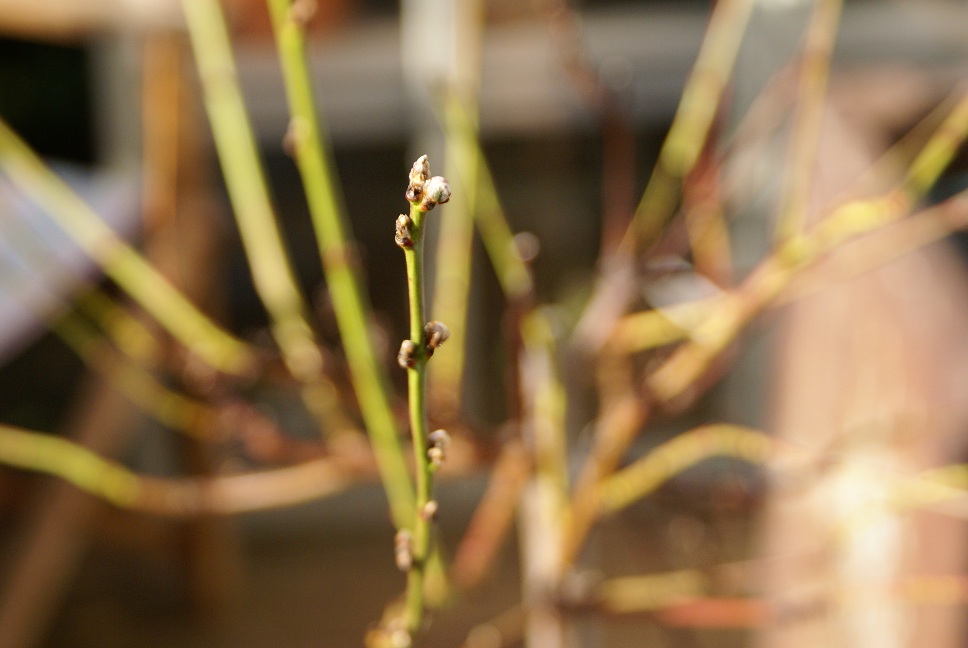I first noticed it about two weeks ago. Those dead-looking stems that had been sitting brownly on my potted nectarines suddenly looked – almost imperceptibly – alive. There were no leaves or flowers, no bells and whistles, but something had changed: there was a livelier gleam to the wood, perhaps, but above all the buds were starting to swell. What were once small and flat became round and swollen, not dramatically, but just enough to tell me that they were thinking about one day bursting into flower. When you spot this on your nectarines it is the cue to get them into your greenhouse, or to use whatever other means you have at your disposal to get them somehow under cover.

In fact I grow mine on the back garden veranda, under its roof. All year long they sit either side of the steps looking leafy and fruity and vaguely grand. They do well here: it is south facing and protected. It is not so much that the flowers need protection from frost, although they are fairly early and can be wiped out by a hard frost if you are very unlucky, leaving you with no possibility of fruit until next year. But the main problem is the effect of rain on the leaves. Raindrops early in the year carry with them the spores of the curse of peaches, nectarines and almonds: peach leaf curl. It is the most beautiful of afflictions, causing the leaves it falls upon to twist and blister in shades of salmon and red. But of course you will not think it is beautiful when it has weakened your plant so that it struggles through the year rather than romps though it full of vim, and goes on to produce maybe a single nectarine. Only those with a microscope and no taste buds will truly appreciate its glories.
And so this is a point where having a cool greenhouse can give quite the leg up. These plants need no warmth, they just need to have the rain kept off of them as the leaves emerge, and for a few weeks after that. Beyond that there are less of the spores in the rain, or the leaves are strong enough to hold their own. Either way, this cover is just a temporary arrangement. If your plants aren’t too huge (and you own a sack barrow) you can move potted plants into the greenhouse and out again once the danger has passed. If you are growing your trees trained against a wall or a fence then well done you: it will be fairly straightforward to drape a piece of clear polythene over the plant temporarily. Life becomes trickier if you have a free-standing tree, but again your best bet is to get busy with the clear polythene. I thought I had found the best possible arrangement – growing dwarf trees in pots under the cover of my veranda – but in fact last spring was so wet and blustery that much rain blew in. My trees got the leaf curl despite me and I had just the one juicy nectarine to get smug about later in the summer.
So Im taking this moment of the swelling buds as the moment to haul them in their big pots back from their prime position by the steps, and huddle them away closer to the house, out of the reach of those spore-laden rains. Move yours into your greenhouse for a spell, or do whatever it is you need to do to keep those leaves dry, just for a month or two. You’ll miss the dubious beauty of the infected leaves, but you’ll get more than one nectarine in return.


